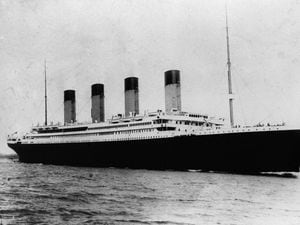Express & Star comment: Lasting treatment needed after Midland Met fiasco
The Midland Metropolitan Hospital seemed like a fantastic idea when construction on it first started back in January 2016.

There had been celebrations across the region when the project was first granted planning permission, with health bosses acutely aware of the crucial role the site could play – particularly in terms of reducing the burden on strained services across the region.
Featuring 670 beds and 15 operating theatres the hospital would provide maternity, children’s and inpatient adult services to an estimated half a million people a year.
Its emergency department was seen as a crucial part of the development, replacing emergency care facilities at City Hospital, and enabling Sandwell Hospital’s A&E to become an urgent care centre.
In some quarters, the sight of ground being broken on the project was viewed as a new dawn for the NHS in the West Midlands.
Four years down the line and the less-than-super hospital has become something of a never-ending nightmare for all concerned.
A hospital that was supposed to cost £350 million will now cost the best part of £1 billion to build and run.
Its original opening date has long faded into the past, with the latest planned opening of mid-2022 almost four years late.
Construction costs alone have nearly doubled, while according to a new report taxpayers are likely to be saddled with a bill for an extra £20m to cover expected further delays.
The reasons behind this disaster are well documented.
The trigger point was the collapse of Carillion, which went into liquidation just 10 months before the hospital was supposed to be completed.
The Wolverhampton-based firm’s demise exposed the dangers of using PFI to fund major projects.
In the following months a catalogue of instances would emerge where private companies had slashed their prices in order to win major contracts, only to find that jobs were often undeliverable at the quoted figure.
When Carillion fell, the government was left chasing its tail, struggling to find a replacement contractor.
And as the weeks and months dragged on the part-completed hospital started to crumble, meaning that when the contract was eventually taken over a fortune had to be spent in remedial work before any new construction could take place.
It is little wonder that the Sandwell and West Birmingham Hospitals NHS Trust now has its own team of experts keeping a close eye on the progress of Carillion’s replacement.
Let us not forget, the Midland Met is not the only project that stalled after Carillion went bust, but along with the Royal Liverpool hospital, it is certainly the most high profile.
Everyone concerned with the Midland Met must bear in mind that while this fiasco has been playing out, the public has been left to look on in absolute horror.
It is the people of this region that has paid the heaviest price.
Health bosses insist that the hospital remains value for money, and we can only hope that in the long run, they are proved correct.
One thing is certain, when a line is finally drawn under this whole debacle, everything possible must be done to ensure that nothing similar can ever happen again.





